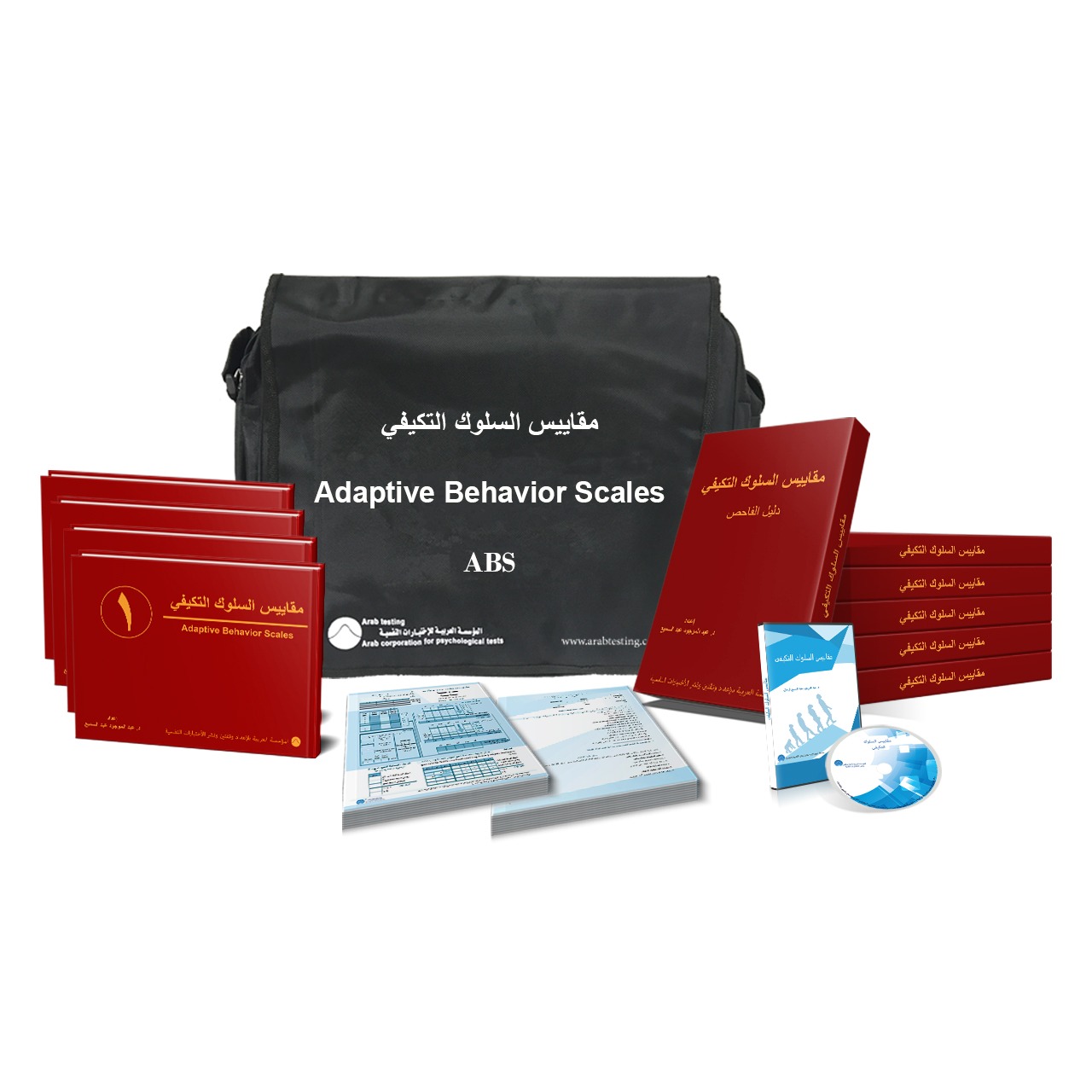
Adaptive Behavior Scales
- Description
They are standardized scales advantaged with a high degree of validity and reliability. They have been designed according to DSM-5; the American Association on Intellectual and Developmental Disabilities (AAIDD) and Vineland scales. Adaptive behavior scales provide a comprehensive picture of the strengths and weaknesses of the individual's personal, social, and motive skills and help us in tracking of growth to determine if the child does grow properly in personal, social, and motor skills in accordance with his/her age and peer. Adaptive behavior scales also determine the extent of deficiency in skills due to aging or illness.
More Info
Adaptive Behavior Scale
Amount 1
-
Quantity
- Scoring
- main domains
- Scale Uses:
- Components of Test Bag:
- Purpose
- Category
- Age
- Admin - time
- Administration Language:
- Report language:
- Test language
- Availability
Directly after finishing administration
They consist of four major domains: social domain, Daily Living Skills (practical) domain, Communication (conceptual) domain, and motor domain. 16 subtest fall under these major domains.
Fathers and Mothers
It helps fathers and mothers to determine whether their children's personal, social, and motive skills are in the right growth path according to their age or not, so they can avoid any problems that may happen later. Also it helps to identify aspects that need intervention. Then, adaptive behavior scales help them to:
• Early detection of disturbances in the growth path and taking into account individual differences among children.
• Raise awareness for the value of facing variety of experiences by the child.
Schools
o Identifying students who have less adaptive skills compared to their colleagues; especially the skills of self-care, health, safety, and expressive and receptive language.
o Directing the family to the imbalance in the child's adaptive skills which negatively affects his/her academic achievement and his/her relationships with colleagues in school. In addition to noting to the possibility that the defect may be the result of behavioral problems or mental disorders.
o It can be used in early grades such as primary and preparatory stages to determine whether the individual has the adaptive requirements needed for the grade or not.
Pediatricians and psychiatrists:
o Verifying the growth of children, because adaptive behavior is one of the mental health indicators.
o Identifying life and personal consequences resulting from a disorder that a child suffers from, which means whether he/she may suffer from depression or anxiety.
o It is used in diagnosing some disorders such as mental disability.
o Adaptive Behavior Scales meet the requirements of the American Academy of Pediatrics, which recommends periodic checkups for children using valid and standardized tools at the age of 9, 18, 24 or 30 months to check overall growth or at the age of 18 and 24 months if parents or care providers think there is a possibility that the child may be suffering from a disorder.
For the Militaries
o Helps to determine whether people are qualified in terms of personal and social skills to join the military service, and if there are points of weakness that must be taken into consideration to avoid specific problems, such as self-care, health and safety skills.
For choosing Life Partner
It helps to identify the strengths and weaknesses of individuals' personal and social skills before marriage. For example, it may predict if there are some deficiencies in household skills or social interaction problems that the wife may suffer from which leads to major problems in martial life. It may as well predict if there is an imbalance in the husband's self-care skills which also leads to major problems in martial life. In this case, both the husband and wife will need a heuristic program to treat such problems.
Special Needs Institutions:
o Adaptive behavior is a key element in the diagnosis of mental disability according to DSM-5, as it is the main element that determines the severity of mental disability, and the eligibility of individuals to be qualified for mental retardation services.
o It is a key tool used in designing, assessing, and following intervention programs.
o Used as additional scales for the process of diagnosis and creating intervention programs for autism by providing a direct assessment for many of the major deficiencies in children represented in social and communication skills.
o Is useful in dealing with individuals who suffer from various disabilities, disorders, and injuries; such as individuals suffering from retardation in mental and physical health, and those who suffer from weak coexistence skills due to chronic or severe problems.
Companies
Some companies need to assess employees or job applicants' adaptive skills, especially work-related, self-care and social interaction skills.
Research:
o It is a standardized tool that can be used in research and study.
o It includes a wide age rage; therefore, it is useful in research and assessment programs over lifetime.
1. 4 books for practical administration.
2. Examiner's Guide.
3. CD contains the scoring computerized software through using your laptop.
4. 25 Record Forms in Arabic.
5. 10 Record Forms in English.
To assess daily life skills and track growth
Adaptive Tests
< 1 - 80
60-90
Arabic / English
Arabic / English
Arabic / English
Available
- Publisher
- Author
Arab Corporation for Preparing, Standardizing and publishing Psychological Tests
Dr. Abdelmawgoud Abdelsamea